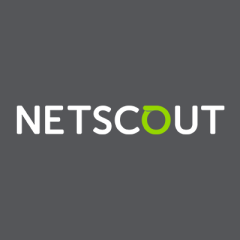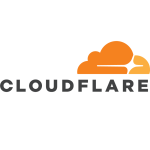What is our primary use case?
We're a hosting company and, in this industry, it's inevitable that you're going to be attacked. We originally purchased the product back in early 2000 for the SQL monitoring. Over the years, DDoS has become a nuisance for other companies we're hosting as well. We had originally purchased it just for internal use, and to predict our own internal infrastructure. But we found an avenue to offer it to our customers as well. It has just grown from there.
It's on-prem to protect our own infrastructure, as well as in the product that we sell to our customers to protect their services. We have a hybrid as well, as we use Arbor Cloud to protect our company's major assets if needed, as a type of over-capacity swing-over.
How has it helped my organization?
In terms of the visibility it provides into traffic to the application layer with the Sightline with Sentinel product, it's really good for what it's getting. If you're sampling traffic at the network edge, you don't get the grand scope that you would if you were seeing every single packet. But you're also getting a wide view of information, and at my level, working on the backbone, I need to see the grand scheme of things. If one customer is being scanned or penetrated in one way, it's not as important to me on the network layer as it is to somebody further down the stack. But if I'm seeing all the different scans coming in at a network layer, or bad actors that we have already identified as trying to hit our infrastructure, then that gives me a better idea of what's going on in my network, which is extremely important to me at that point. I can rally the troops to where I need them at that time.
We've gotten to the point where we have worked with this for so long that the protection provided by Sightline with Sentinel, across the different layers of our architecture from the network to the application, is automatic for us. There are very few adjustments that we need to do for customers, even with the wide range of customers that we have. We've been able to configure and to templatize different aspects of the system to fit about 80 percent of our customers, without having to go in there and fine tune. And now, with the addition of the passive protection, we're able to go in and tune a template further, so that it matches the customer even better with what we're doing.
Another way it helps the way our organization functions is because it does have a GUI. I'm able to present information and walk different parts of our leadership through different aspects of attacks, and how we're blocking them. One of the biggest examples of that was my ability to show them, by deploying flow specs, how much traffic I was dropping at the network edge, compared to how much traffic was actually coming into our networks. I showed them how it was saving us from having to upgrade capacity within the data center. It's been our backbone to different aspects of our environment.
In addition, other security groups that may not be at the network level, have the ability to go in and pull NetFlow from Arbor, and start looking for defined signatures of known bad actors out there or known signatures of tools that they may have.
We're averaging about 1,900 attacks a day. And we're only looking at attacks that could affect our infrastructure. We don't offer this service to everybody within our data centers. Arbor was deployed to protect the infrastructure. There are still a lot of attacks that are getting through that we're not really worried about. We're only looking at the larger types of attacks and engaging them more.
And because this is pretty much automated, we are able to catch attacks now within five to 30 seconds. And in the world of hosting, every single millisecond counts. We offer 99 percent uptime. Without Arbor, we'd probably be around 75 to 80 percent uptime. Attacks are cheap nowadays. People can create a lot of bandwidth for a couple of dollars.
Arbor DDoS also consolidates visibility and the actions we need to take, at the backbone level. Because we have 10 data centers spread out across the globe, and more coming in the future, it gives us better visibility not only into bad actors and traffic coming in, but also the ability to see how traffic is moving from one data center to another. Peer evaluation helps us to see if a peer at a given location is a better use than at another location. Also, point-to-point, from data center to data center, for VPN services that we offer, it has opened up a lot of different aspects of traffic analysis that we weren't really utilizing. Now, we're able to see where we need to adjust our bandwidth, and save money, and other places where we need to raise bandwidth before it costs us money.
It's also helped us get a better idea for future capacity planning, not only for current data centers, but data centers that are going to be in different regions where our company is located.
And the biggest benefit, for us as A company, are savings from peer evaluations; seeing where we can better utilize the relationship with different providers and if there is the potential for mutual benefit across multiple data centers, globally.
What is most valuable?
I'm a network engineer by trade. We use it not only for DDoS detection and protection, but we also use it for traffic analysis and capacity planning as well. We've also been able to extend the use of it to other security measures within our company, the front-line defense, not only for DDoS, but for any kind of scanning malware that may be picked up. It's also used for outbound attacks, which has helped us mitigate those and lower our bandwidth costs, as we get charged for outbound traffic. But the biggest use right now is for DDoS.
I like Arbor's hybrid approach to DDoS protection. It's a really good setup. We have the on-premise devices and we can monitor and protect our own infrastructure and that gives us a good handle on that traffic. Since we offer it as a service to our customers, those customers really don't want their traffic leaving the data center. Since we're global, when we get to Europe, there are places where that's not possible. So having a hybrid approach, and especially now with the new features that they're installing, we can kick up to Arbor, if needed, to protect our infrastructure and still have visibility within our own deployment to see how traffic looks without having to go to the third-party portal to log in and see traffic.
Its ability to incorporate DDoS with visibility and protection from the network layer up to the application layer, through the use of the Smart Data feature, works really well. You get a lot more visibility than you would with just NetFlow, especially when we get into the situations where we're in the DDoS and seeing every single package that's coming through. In that situation, a wider scope of information is available not only to us but to other security teams as well. We coordinate with our other security teams, further down the stack, and are able to mitigate at different levels using the information that we're pulling from Arbor. We call it the "security onion." We mitigate at different layers.
What needs improvement?
Their RESTful API is still a work-in-progress. They're pushing out different versions of the API with each code upgrade.
I would also like more visibility into their bad actor feeds, their fingerprint feeds. We try to be good stewards of the internet, so if there are attacks, or bad actors within our networks, if there were an easier way for us to find them, we could stop them from doing their malicious activity, and at the same time save money.
For how long have I used the solution?
The company has been using Arbor DDoS for 20 years now. I have been using it for 11 years.
What do I think about the stability of the solution?
The overall stability is great. In the 11 years that I've worked with it, I've had to replace three devices because of an issue with the actual hardware or software. And in my line of business, that's beyond awesome. We have replaced more backbone devices in that time, in one data center, than Arbor devices.
What do I think about the scalability of the solution?
Scalability is great, at least at the hosting level. Tier-1s may have bigger issues with scalability as far as actual filtering devices go. But they've gone to virtual machines now as well, where they're able to deploy these virtual devices in a way that they couldn't with hardware devices, and at a better cost.
If we can find another use for increasing visibility, we're always glad to help. One of the things that we've found in the past, from security incidents, was that different groups were seeing different issues at different times and nobody knew about it until everybody together came afterwards to discuss the problems or the issues that happened. So we're coordinating with other departments within our organization, not only to provide our feeds, but other feeds from other security tools.
How are customer service and technical support?
Their technical support is excellent. One of the biggest things about Arbor is their knowledge. We're usually about a step behind when it comes to their code — that's just engineering caution — so by the time we run into an issue, they have already seen it, most of the time, and are able to fix the issue for us before it becomes a bigger issue. There have been times when they practically contact us about possible patching that we may need, just to circumvent any future problems.
I'm in a position where I've been affiliated with Arbor for such a long time, that I know a lot of their top engineers, and any kind of features that we request are usually fast-tracked.
Which solution did I use previously and why did I switch?
We had Cisco products. We switched because the usability was just too complex. With Cisco, we were able to adjust many things, but there were way too many buttons to push, to help you out. Arbor gives you a great balance between simplicity and surgical precision that I haven't been able to find in other products.
I do test other DDoS products. And one of the things that I have found is that there's a lot of what I call "black magic" software, where you click on a button or switch and it automatically does what you want it to do, but you really have no understanding of what it's doing on the back-end. With Arbor, and being in engineering, you have a great idea of what's going on and how it's being utilized, which makes troubleshooting issues during mitigations a lot easier. If you know exactly what a countermeasure is doing, then you're able to precisely say if it's an issue with your system or if it's further down the stream on another device, a firewall or a load balancer, etc.
How was the initial setup?
The setup depends on the network, but from start to finish, they're really good at helping you set this up. Their sales engineers are very hands-on people. It's pretty much straightforward for a mid-level engineer to set up, without any real help.
We redeploy new hardware every five years, and we can redeploy 48 devices within three days with no network interruption. And we can deploy a single data center for DDoS within four hours, max.
We have a standard implementation strategy. We have them on standby. We have them deliver all their devices with any code that we're going to be upgrading to or running. For the most part, they will stage any type of code or patches that we may need. From there, it's pretty much unplug it and plug it back in.
We have a team of three for deployment. At any given time, one way or another, I would say close to 150 people are using it. Their roles include peer coordinators. We also have our design and build engineers looking at capacity. There are people on my team that deal with nothing but DDoS attacks. I have network operations dealing with network visibility. I have internal SOCs that are looking for any kind of malware or bad actors trying to invade our corporate network. We also have our customer SOC desk looking at the internal data center backbone for customers.
What was our ROI?
We have definitely seen ROI. DDoS is something that was not supposed to stay around, but it has been around for quite a long time now. If you're going to be in the internet business, the chances of your being attacked are great. We've been able to incorporate it into our service where it pays for itself very quickly.
Our deployment can pay for itself within a year, and we're protecting close to $80 million of monthly revenue of customers that are using the service.
And that's just a portion of what it's being used for. The capacity planning and being able to block outbound DoS attacks, saving us bandwidth, adds up as well. The last metrics we had there, we were sitting at close to $375,000 per data center by reducing outbound attacks. That also makes our facility less attractive to bad actors to use as a jumping off point or as a reflection point.
What's my experience with pricing, setup cost, and licensing?
You pay for what you get. Like any other consumer product, there are things out there that are extremely cheaper than Arbor, but you're also not going to get the type of information that you do with Arbor. And there are some other companies out there that are a little pricier than Arbor, that are not going to mitigate and give you the type of information that you want. Arbor is striking a good balance between pricing and what they deliver.
In terms of costs in addition to their standard licensing fees, it depends. There are other feeds that you can subscribe to. There are different services that they're starting to bundle up with NETSCOUT, that you'll be able to subscribe to. There are some feeds on proactive alerting. Because they have such a big visibility into the global internet network, they're able to see botnets discussing or targeting potential customers of yours, and they can actually make you aware of such. They have different feeds that they get from their security team that help you mitigate DoS attacks without any kind of intrusion on your part. You don't have to make any kind of adjustment to countermeasure. These are pre-configured signatures that they see in the wild and that feed is delivered straight to your mitigation device and can mitigate DoS attacks that common users wouldn't be able to do by themselves. That is great for those who are first taking on the product and getting into taking on DDoS attacks.
Which other solutions did I evaluate?
We've looked at Radware among others. Some of the other ones are really GUI-heavy. They have pretty pictures and you can click around, but that's the extent of what you can do. You can't go in and fine tune some of these systems. They're either very network-mitigation-type heavy, or they're more on the application. They're not a really good balance of both, which I've been able to find with Arbor. Another thing I have found is that a lot of these competitors have feeds. And once you start diving into their feeds and seeing where their sources are, a lot of them have Arbor as one of their feeds.
One of the reasons that we stay with Arbor is its evolution to meet growing concerns around DDoS attacks. My job is to find the best product out there to protect our infrastructure. I've looked for years and years, and continue to look, and Arbor has been able to give us the best results overall, as well as the best equipment, with the least number of headaches. We get a great bang for our buck. Requests that we put in for features are met with either a great explanation of why they can't fit it in, or are deployed months after we've requested them. Arbor's biggest feature is not their equipment, rather it's their knowledge, because they get such great visibility into the global network. They're able to see things that are months ahead of hitting the rest of the industry and are usually one step ahead of what's about to hit.
The new feature that stands out compared to their competition is their automatic flow specs. Flow specs are nothing more than dynamic ACLs on the network edge, using PGP. What this does is it surgically reduces the amount of capacity we need to use from their TMS (threat mitigation system) and now use the network edges, the routers, to drop the traffic that's not wanted. There are a lot of what we call "dumb attacks," reflection amplification attacks, that can decimate a data center. With flow specs, we're able to drop that traffic before it even enters into our network. That's exactly what you want. You want to be able to stop and drop traffic further up the stack, as much as possible.
Another feature that they're working on, that I'm excited to see, is the ability to share these flow specs, these rules, with your provider. So if we have an attack, and we have AT&T or another of the big Tier-1s, we can send them our rules, and they can block the traffic at their network at that time, which reduces the liability to our network as well.
They're also starting to put out reporting features. It's often hard to take what you see at the technical level and push that up to your C-level type of executives. They like pretty graphs and you can't really do that with the information from NetFlow. But using the new executive reporting makes it a lot easier for us to justify it for next year's budget. And if there are budget cuts somewhere, we can always show to our leadership how useful this deployment is, to get the additional capital or OpEx, if need be.
These features are available in competing products, but not to the extent that Arbor has in its reporting. Reporting is available in a lot of products, but the information they provide is something you have to go in and actually create. And you're limited to what you're able to create. With Arbor, and its REST API, we can now create all kinds of reports that suit the person or the audience that we're trying to get to.
There's no other competitor that I'm aware of, right now, that's working with the providers to be able to share flow specs between them. That's one of the advantages that Arbor has in working with something like 95 percent of the Tier-1 providers. Arbor has a little more insight into the bigger providers that we rely on. Other competitors have not gone to that level yet.
What other advice do I have?
Talk with their sales engineers and understand the different uses of Arbor. If you're just looking just for a pure DDoS product, there may be other solutions within Arbor that are better to use, or different feeds that may be beneficial. Maybe you're more into capacity planning or peering analysis, and there are other things in addition to those that you can do with Arbor. If you're buying it for DDoS, you still do capacity planning and peer evaluation for the same cost using the same license. But what I've found with other people that use the product is they're single-use. Some buy it for DDoS and only use it for DDoS. They don't take into account the other information that they could be pulling from it.
The sheer amount of traffic that's out there in the network is one of the biggest things I've learned from using the solution. Looking at north-south traffic, traffic coming into our data centers and out of our data centers, it's a lot higher than what we had thought we would see when we first started using Arbor. It helped us to provide an infrastructure that was future-proof. Before we started understanding the different uses of Arbor, we would upgrade our routers on the edge, only to have to upgrade two or three years later when the actual router was still viable but it just wasn't able to control or handle the capacity. Now, we're able to put devices in place that are future-proof and that reduces our costs by not having to replace those devices every so often because they ran out of bandwidth.
Another thing we found was the number of bad actors that were living within our environment. When cloud first started popping up, everybody rushed to get their own clouds up and running. What wasn't taken into account was that there was a lot of malicious traffic that was being generated by these types of environments. They gave us a better understanding of cloud computing and the security issues that we would be facing as we tried to expand that environment.
Sightline with Sentinel does not yet communicate information upstream to our service provider around attacks, so that they can stop the attack closer to the attacker. It's something that we've been working on with Arbor for many years. There are some programs out there that Arbor is working on where we can communicate with other deployments that have Arbor. From the engineering perspective, we're all for it, not only at my company but even at the major Tier-1s. It's when you get up to higher management that we hit the roadblocks. Everybody in security wants to share information, but nobody wants to say anything either.
More and more people are coming around to the idea that they need some type of DDoS protection as part of their security posture. We tell customers that there's no one silver bullet out there that's going to do it all. Arbor does a great job of mitigating DoS attacks but we don't want to do all the blocking with Arbor devices, so further down the stack you want load balancers and firewalls to help you out.
The fact that Arbor has been in DDoS visibility and protection for more than 10 years definitely affects our confidence in it. I've been with other providers that use Arbor as well and that's one of the things that is always brought up, the confidence level. Deploying this on my network and the visibility it's going to give me is hands-down better, compared to an up and coming cheaper product that may claim to have better abilities to mitigate DDoS attacks. But they don't have the visibility that you really need. That's the key asset that Arbor has because they've been in the business for so long and have these great relationships with these big Tier-1 providers. They're not only able to provide the necessary equipment but, more importantly, the knowledge that comes with it. At the root of things, all DDoS vendors basically do the same thing, they drop traffic. It's the knowledge of what type of traffic to drop that is extremely important, to me and others who are in the same business. When you have visibility into one-third of the global internet, you have great visibility into what's going to happen in the future as well.
I would give Arbor DDoS a nine out of 10. There's always room for improvement. With DDoS products, there's always an evolving merry-go-round of different attacks. For me, giving it a 10 would be that silver bullet where it is going to handle all your attacks. Arbor will be straightforward with you and let you know that it's not that silver bullet and that there are times when its system is not the best system for the use that you have. One of the downfalls, at least on our site, has been that its visibility into the application layer in the monitoring mode is not the best, and that's because it's sampling traffic. Once it's in a mitigation and seeing packet-for-packet, it's devastating to see the amount of information you can pull. That's why we've gone ahead and implemented different Arbor devices lower down, closer to the application, to give us even more visibility.
Disclosure: PeerSpot contacted the reviewer to collect the review and to validate authenticity. The reviewer was referred by the vendor, but the review is not subject to editing or approval by the vendor.


















